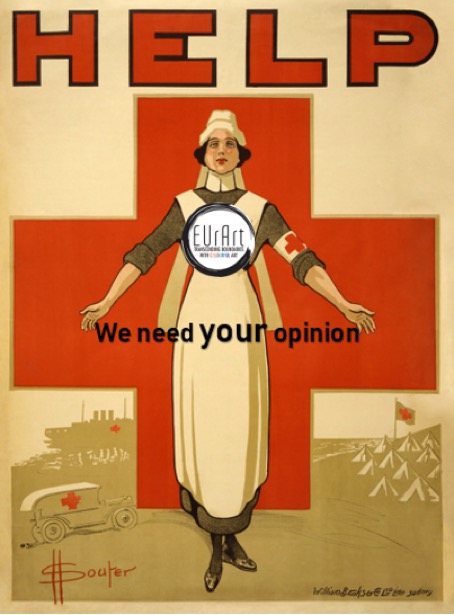
Culture represents one of the most powerful resources Europe can make use of. Think about how Intercultural dialogue can help to bring individuals closer together or how cultural cooperation can foster processes of democratisation and also about its strong economic potential (CISAC Press Release, 2015). For these and several other reasons culture should be placed at the core of the European Union concerns. Although I will present you here with a brief outline of what I am researching for EUrArt, I really need your opinion. In fact, here you have a chance to make your voice heard. Are you curious how the EU and arts are connected? In the next paragraphs I will give you an idea of why the arts are important, what current obstacles are, and what all of this has to do with you.
As the Council of Europe unanimously declared, promoting culture as the “soul of democracy” means advocating strong cultural policies and governance – aimed at transparency, access, participation and creativity, respect for identity and diversity, intercultural dialogue and cultural rights – as the basis for respectful and tolerant living together in an ever-more complex world (Council of Europe, 2018). The promotion of culture takes place through several initiatives at EU-level such as Creative Europe (EACEA), which aims at celebrating European identity and boost local arts further. But what about the role of the art community like museum heads, gallery owners and critics? Is it as inclusive as the European Union aims to be? In our society, museums and art galleries are extremely relevant for knowledge acquisition and education. Not only can they be conceived as an instrument to increase knowledge and understanding of all aspects of society, but these institutions are also able to strengthen the links between individuals and the reality they live in. In order to draw a general picture of the perception that young Europeans have of their cultural environment (EUR-Lex, 2006). These art institutions have the capability of communicating to to those who attend them cultural values and have as such an instrumental role in the society . However, how many of those who call themselves representatives of European art do actually represent cultural heritage in its variety fully? The art community encourages and financially enables the production of works of art, therefore playing a decisive role also in choosing which artists better suit the canons they set themselves (Sandell, 1998). Victims of the art community’s choices are therefore all artists who do not fit into those standard categories, such as women or sexual, ethnic, or religious minorities (Da Milano, 2013). EUrArt is a working group that intends to transcend national boundaries with art. Given the multicultural background of Europe, also its artists are from different origins, genders, religions and lifestyles. Therefore, EUrArt challenges the paradigm that the universality of European art emerges from a small segment of society. Works by minorities or other social groups are, in contrast, considered as group-specific and not part of European art. Through a bottom-up inductive research, my research will investigate the perception the European youth has of its cultural environment and of the democratic approach of the art community. To find out more about these questions, I will run a survey among young European citizens between the age of eighteen and twenty-five. My questions concern the perception of the European youth on the availability of art in Europe, the level of involvement of young citizens in cultural initiatives and the popularity of cultural initiatives organized at EU level. Getting to know the concerns of young Europeans concerning the European cultural sector is extremely relevant since the aspects they would improve or the initiatives they find interesting and relevant can be essential for future developments, perspectives and innovative new ideas. This is the reason why we need your opinion and your involvement. When talking about future initiatives, whom better to ask than the generation of the future to guarantee more variety and inclusion in the art world?
Next up: Our researcher Mia is going to talk about champagne, chauffeurs, and how social structures also affect the arts. Keep in touch!
By Isabella Mongardi, Searcher of the EUrArt Working Group.
Bibliography
- CISAC Press Release (2015). Cultural and Creative Industries Fuel Global Economy and Provide 29.5 million Jobs Worldwide. Retrieved from http://www.worldcreative.org/
- Council of Europe (2018). Council of Europe official website, https://www.coe.int/en/web/portal/home
- Creative Europe (EACEA), https://eacea.ec.europa.eu/creative-europe_en
- Da Milano, C. (2013). Museums as agent of social inclusion. Retrieved from http://museummediators.eu/wp-content/uploads/2013/09/Museums-as-agents-of-social-inclusion_DaMilano.pdf
- EUR-Lex (2006). Recommendation of the European Parliament and of the Council on key competences for lifelong learning, (2006/962/EC).
- Sandell, R. (1998). Museums as Agents of Social Inclusion. Museum Management and Curatorship, 17(4), pp. 401-418.

 The ’Ndrangheta’s Infiltration and Threat to European Institutions
The ’Ndrangheta’s Infiltration and Threat to European Institutions  From Paper to Practice: How Grassroots Norms Undermine Gender Rights in Pakistan
From Paper to Practice: How Grassroots Norms Undermine Gender Rights in Pakistan  Exploited Childhoods: The Role of Global Corporations in Perpetuating and Mitigating Child Labour
Exploited Childhoods: The Role of Global Corporations in Perpetuating and Mitigating Child Labour  Human Rights Challenges in Addressing SLAPPs in Media, NGOs and Journalism in the EU
Human Rights Challenges in Addressing SLAPPs in Media, NGOs and Journalism in the EU 


